48TC**17 - 30
Nominal 15 to 27.5 Tons
with Puron® (R-410A) Refrigerant
Service and Maintenance Instructions
TABLE OF CONTENTS
SAFETY CONSIDERATIONS 1....................
UNIT ARRANGEMENT AND ACCESS 3...........
SUPPLY FAN (BLOWER) SECTION 4..............
STAGED AIR VOLUME (SAV) CONTROL: 2−SPEED
FAN WITH VARIABLE FREQUENCY DRIVE (VFD) 6
ADDITIONAL VFD INSTALLATION AND
TROUBLESHOOTING 6..........................
CONDENSER COIL SERVICE 8...................
EVAPORATOR COILS 10.........................
HUMIDI−MIZER DEHUMIDIFICATION SYSTEM 11
THERMOSTATIC EXPANSION VALVE (TXV) 17....
PURON (R−410A) REFRIGERANT 19.............
COOLING CHARGING CHARTS 20................
COMPRESSORS 24..............................
TROUBLESHOOTING THE COOLING SYSTEM 26..
CONVENIENCE OUTLETS 27....................
SMOKE DETECTORS 28.........................
INDICATORS 34................................
PROTECTIVE DEVICES 35.......................
PREMIERLINK™ CONTROL 37...................
RTU−OPEN CONTROL SYSTEM 38................
GAS HEATING SYSTEM 40......................
ECONOMI$ER SYSTEMS 51......................
PRE−START−UP/START−UP 60....................
START−UP, PREMIERLINK™ CONTROLS 62.......
START−UP, RTU−OPEN CONTROLS 63............
APPENDIX I. MODEL NO. NOMENCLATURE 64....
APPENDIX II. PHYSICAL DATA 65................
APPENDIX III. FAN PERFORMANCE 75...........
APPENDIX IV. WIRING DIAGRAMS 81............
APPENDIX V. MOTORMASTER SENSOR
LOCATIONS 94.................................
UNIT START-UP CHECKLIST 95..................
SAFETY CONSIDERATIONS
Installation and servicing of air-conditioning equipment
can be hazardous due to system pressure and electrical
components. Only trained and qualified service personnel
should install, repair, or service air-conditioning
equipment. Untrained personnel can perform the basic
maintenance functions of replacing filters. Trained service
personnel should perform all other operations.
When working on air-conditioning equipment, observe
precautions in the literature, tags and labels attached to
the unit, and other safety precautions that may apply.
Follow all safety codes. Wear safety glasses and work
gloves. Use quenching cloth for unbrazing operations.
Have fire extinguishers available for all brazing
operations.
Follow all safety codes. Wear safety glasses and work
gloves. Use quenching cloth for brazing operations. Have
fire extinguisher available. Read these instructions
thoroughly and follow all warnings or cautions attached to
the unit. Consult local building codes and National
Electrical Code (NEC) for special requirements.
Recognize safety information. This is the safety−alert
symbol . When you see this symbol on the unit and in
instructions or manuals, be aware of the potential for
physical injury hazards.
Understand the signal words DANGER, WARNING, and
CAUTION. These words are used with the safety−alert
symbol. DANGER identifies a hazardous situation which,
if not avoided, will result in death or severe personal
injury. WARNING indicates a hazardous situation which,
if not avoided, could result in death or personal injury.
CAUTION indicates a hazardous situation which, if not
avoided, could result in minor to moderate injury or
product and property damage. NOTICE is used to address
practices not related to physical injury. NOTE is used to
highlight suggestions which will result in enhanced
installation, reliability, or operation.


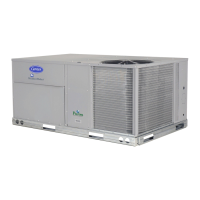

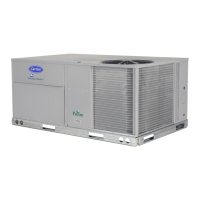
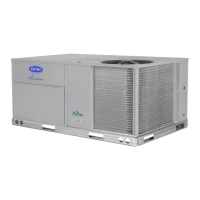

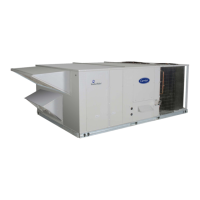

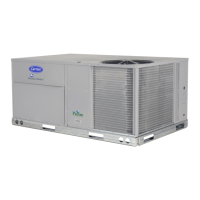



